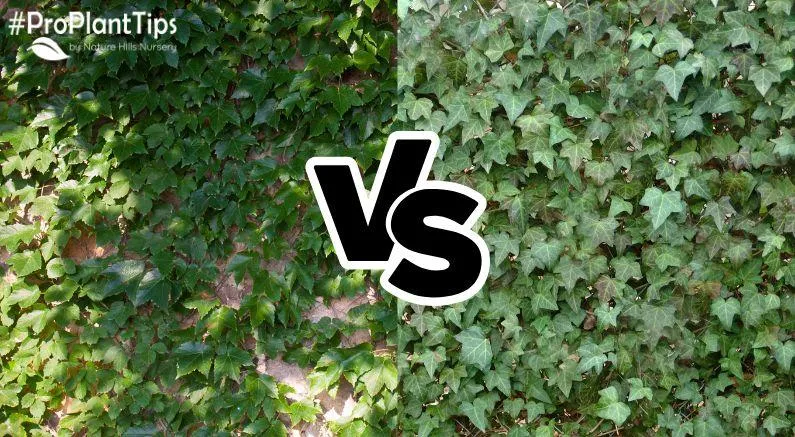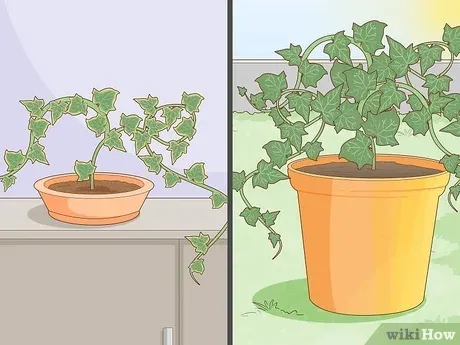A Comprehensive Guide to Growing Ivy Plants Indoors
Ivy plants are one of the easiest and most forgiving houseplants to keep indoors. With their trailing vines and lush green leaves, they add beautiful texture and a sense of nature to any indoor space. However, growing ivy successfully inside takes some know-how. In this guide, I’ll cover all the basics of ivy plant care so you can have these lovely vines thriving in your home for years to come.
Choosing the Right Ivy Variety
- English Ivy (Hedera helix) – The classic ivy variety known for its vigorous growth. It does best in partial shade and tolerates low light.
- Swedish Ivy (Plectranthus verticillatus) – More tropical-looking with dark green ovate leaves. Requires brighter light than English ivy.
- Neon Pothos (Epipremnum aureum) – Not a true ivy but behaves similar. Heart-shaped leaves that come in solid green or variegated. Very hardy.
I’d avoid super hardy ivies like Boston or Grape if space is limited, as they can take over! From my experience, English and Neon Pothos strike the ideal balance of lush growth without dominating.
Choosing a Pot and Soil
The container for your ivy should have drainage holes to prevent root rot. Terra cotta, plastic, or glazed ceramic pots all work well. As for soil, use a well-draining potting mix rather than regular garden soil. Good drainage is key since ivies dislike soggy roots.
You could basically use any old pot lying around if it has holes in the bottom. Kind of a hack I learned – drill holes in solid objects like glass vessels or hollowed-out gourds to make creative planters. Just don’t go overboard or the roots may not breathe!
Watering Needs
When it comes to watering ivy plants, the motto is “moderate but consistent.” Allow the top inch of soil to dry out between waterings rather than keeping it constantly moist. You don’t wanna totally soak the plant, but spraying the leaves every few days helps with humidity.
From my experience, these vining beauties are pretty forgiving of the occasional dry spell or heavy watering. However, a good rule of thumb is watering once the top soil appears dry. Stick your finger in to check the moisture level below the surface. Houseplants tend to be temperamental critters!

Light and Temperature
Most varieties of ivy thrive in medium to low indirect sunlight. Place them in a east- or west-facing window to get morning or afternoon sun, respectively. Avoid direct sun which can scorch the leaves. Temperature-wise, ivies prefer average indoor conditions between 65°F to 80°F year-round.
Basically, as long as there’s sufficient natural lighting for at least half the day, you shouldn’t have issues keeping ivy plants happy indoors. Sort of goes to show their tough nature! But is direct sun really a dealbreaker, or will they eventually adapt like we humans often do? Who’s to say for sure.
Humidity and Fertilizer
While ivy plants don’t require high humidity, they do appreciate moisture in the air. You can boost humidity levels by grouping plants together or using a pebble tray or humidifier nearby. Fiddle leaf fig trees and orchids actually prefer drier indoor conditions, so ivies make great companion plants!
Feed monthly in the growing season (spring-fall) with a diluted liquid houseplant fertilizer. Stronger formulations can burn delicate ivy leaves. From my experience, a little fertilizer goes a long way. I’ve seriously killed more plants by over-fertilizing than under-fertilizing, so tread lightly!
Pruning and Training Vine Growth
Ivies naturally trail and spill over pot rims when given the chance. To encourage an attractive cascading form, you can lightly prune stray vines or guide new growth around a support structure. Wire frameworks, fishing line, small trellises – the options are endless! Just be careful not to chop too much at once.
With time and maturity, you’ll start to see ivies flowering too. Tiny creamy white blooms appear in spring and summer. Feel free to shear these off if pollen isn’t your thing. Or let the flowering run its course – it’s your plant, so do what feels right!

Pests and Problems
Generally, ivy plants are pretty pest-resistant indoors. But watch out for mealybugs which look like tiny puffs of cotton. Wipe them away with isopropyl alcohol or a soap/water solution. Spider mites cause webbing and yellow spots – spray leaves with water to dislodge.
Root rot from overwatering is more common than most bugs. Make sure the soil dries out adequately between waterings. Yellow or brown crisped leaves may mean it’s time to repot into fresher potting mix. And keep ivies out of reach of pets, who may nibble on the attractive foliage!
Propping New Plants
Want to expand your ivy collection? It’s easy! Just snip 4-6 inch vines, remove lower leaves, and place cut ends in water. Within weeks you’ll see roots developing. Once established, pot up the new plantlets in soil. This way your ivy vines will keep spreading vertically rather than just trailing all over like crazy. Pretty neat trick, right?
Final Thoughts
In summary, ivy plants are low maintenance beauties that thrive on neglect. Their ability to tolerate less-than-ideal conditions makes them ideal for beginner plant parents or those with busy lives. With just the right amount of light, water and care, your ivies will bounce back time and again. Green thumbs not required! Hopefully this guide has covered all the essentials to keep your ivy vines indoors looking lush and lovely. Let me know if you have any other questions!
Tips for Growing Ivy Plants Indoors
| Type of Ivy | Light Needs | Watering | Fertilizer |
|---|---|---|---|
| English Ivy | Low to medium light | Allow soil to dry slightly between waterings | In spring and summer, use liquid fertilizer diluted to 1/2 the strength recommended on the label every 2 weeks |
| Swedish Ivy | Low to bright light | Water when top inch of soil is dry | Same fertilizer schedule as English Ivy |
| Cast Iron Plant | Low to medium light | Allow soil to dry out slightly before watering | Fertilize in spring and summer with liquid fertilizer diluted to 1/2 the recommended strength every 2-4 weeks |
| Purple Wandering Jew | Bright, indirect light | Water when top inch of soil is dry | Fertilize monthly in spring and summer with half-strength liquid fertilizer |
FAQ
-
Can I grow ivy plants indoors?
Absolutely! Ivy plants work really well inside the home. As long as they get the right amount of sun and water basically anyone can keep them alive.
-
What kind of light do ivy plants need?
Ivy plants prefer mild, indirect sunlight. Direct sun could possibly scorch their leaves. Put them in a spot that gets morning or afternoon light from an eastern or western window. At the same time they don’t do well in totally dark areas either.

-
How often should I water an ivy plant?
When it comes to watering, it’s best not to have a set schedule and insteadcheck the soil. Water only when the top inch or so becomes dry. Overwatering could cause root rot which would be bad news. You might say watering an ivy is more of an art than a science!
-
Do ivy plants need fertilizer?
During the growing season from spring to fall, you’ll want to give your ivy some plant food about once a month. Choose a balanced houseplant fertilizer and follow the instructions on the label. Fertilizer provides nutrients to keep those leaves looking their best. On the other hand too much can burn the roots so go easy on it.
-
How do I get an ivy plant to vine?
To encourage vining, simply guide the stems where you want them to grow such as up a moss pole or trellis. The stems will attach themselves with tiny roots as they go along. Be patient though since ivies are not the fastest climbers. Still, eventually it will fill out to be that beautiful hanging or trailing plant you’ve envisioned.
-
Will ivy plants remove toxins from the air?
Studies show that some common houseplants including ivy may help purify indoor air by removing volatile organic compounds or VOCs. VOCs can come from things like paint, cleaning products and new furniture. Unfortunately this is sort of an urban myth since a few plants alone cannot fully solve indoor air pollution problems. But it’s a nice idea!
-
Will ivy plants be harmful around pets or kids?
Most varieties of ivy are not considered poisonous. However all parts of the plant should be kept out of reach of little ones or pets just in case. If eaten, it might cause an upset tummy. The sap could possibly cause a skin rash too. So to be on the safe side, display ivies up high or behind a barrier when little hands are around.
Does this help answer some basic questions about growing ivy plants indoors? Let me know if you need any other info!

